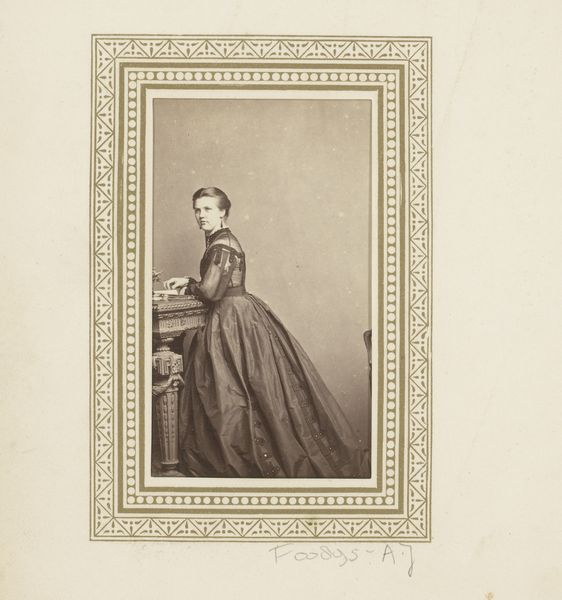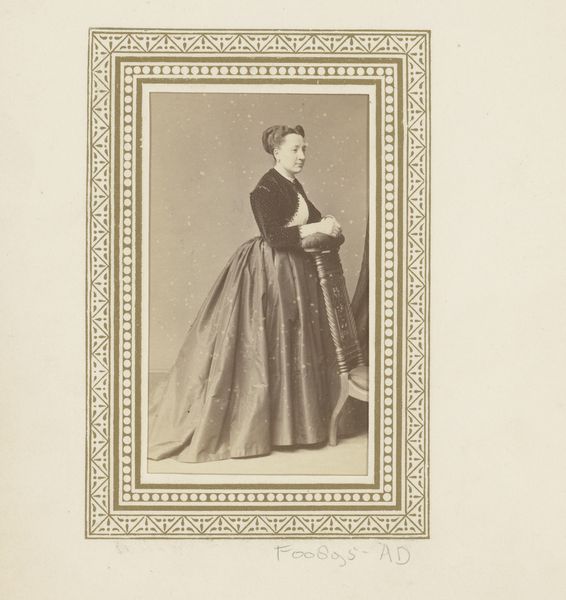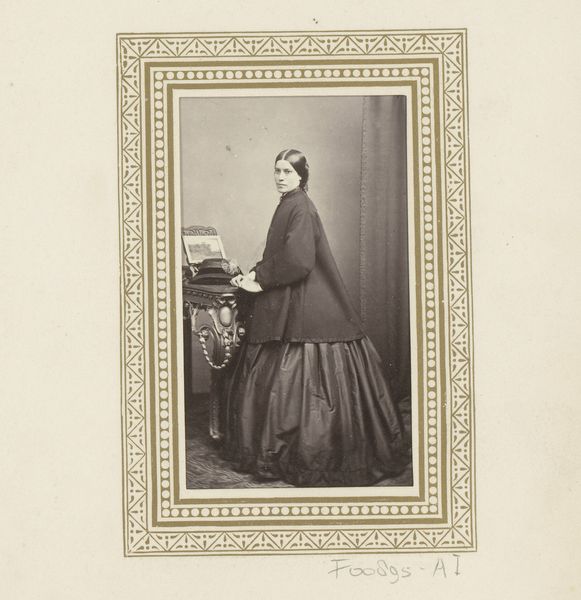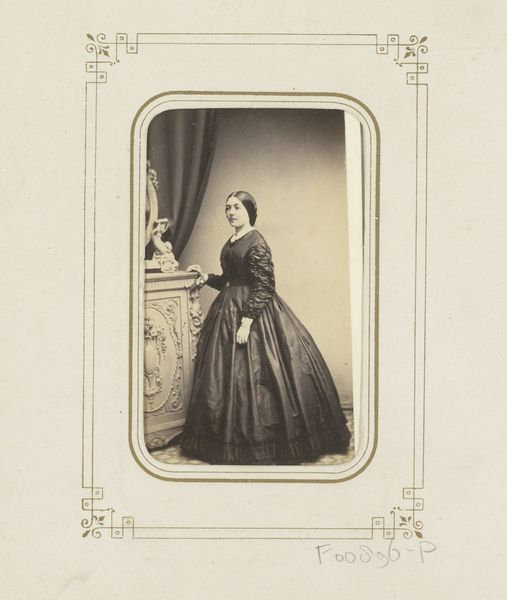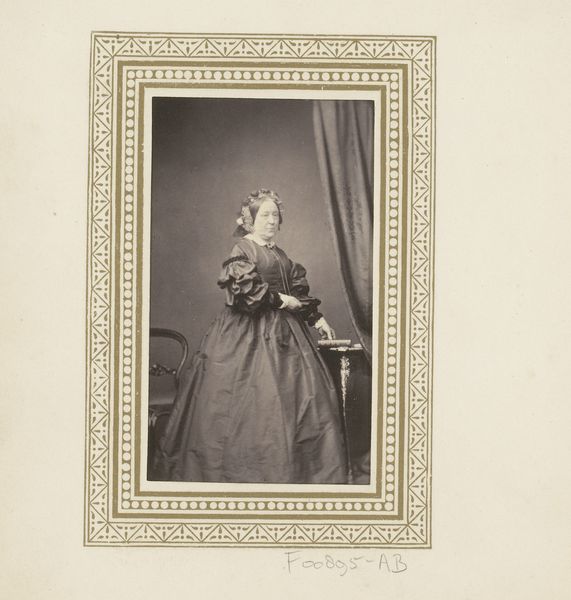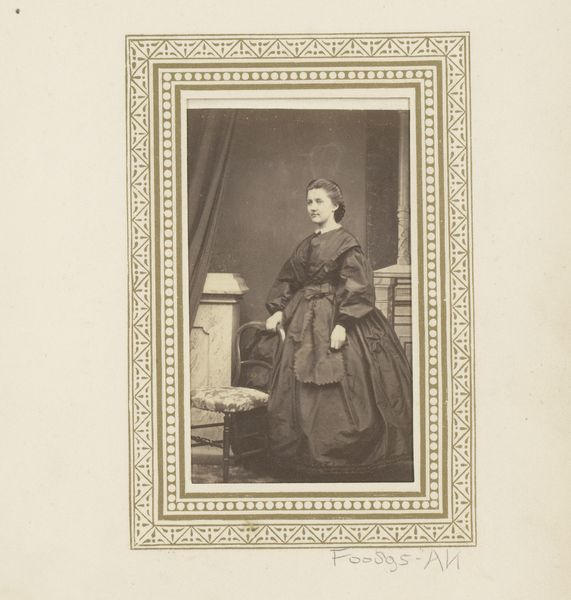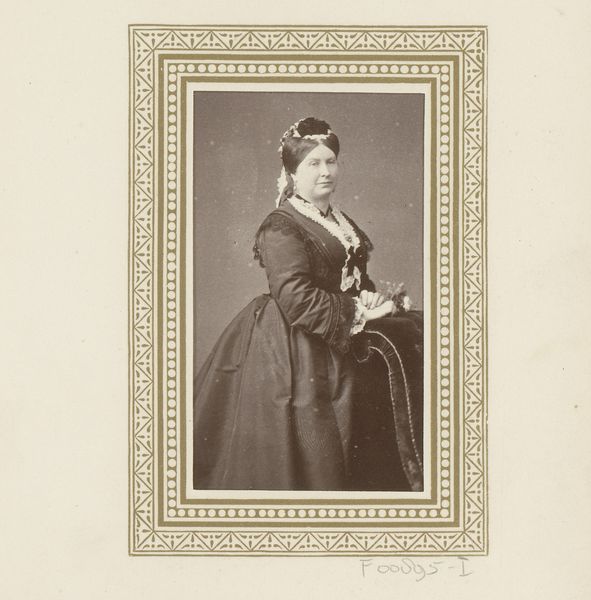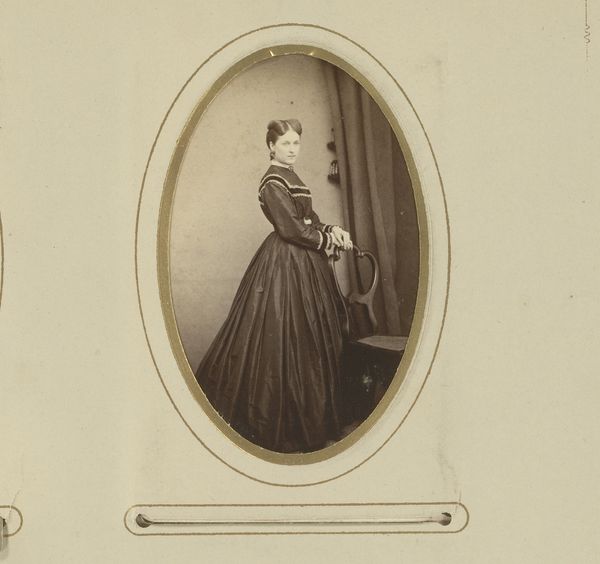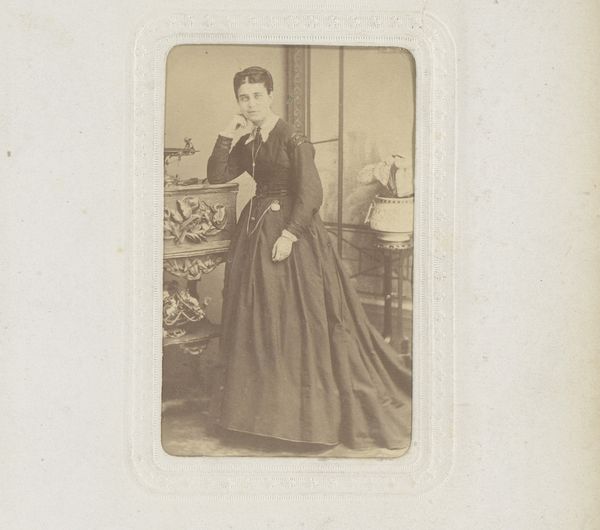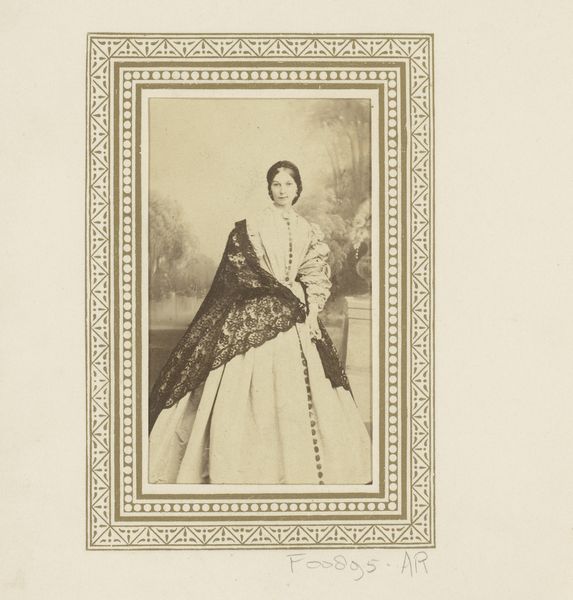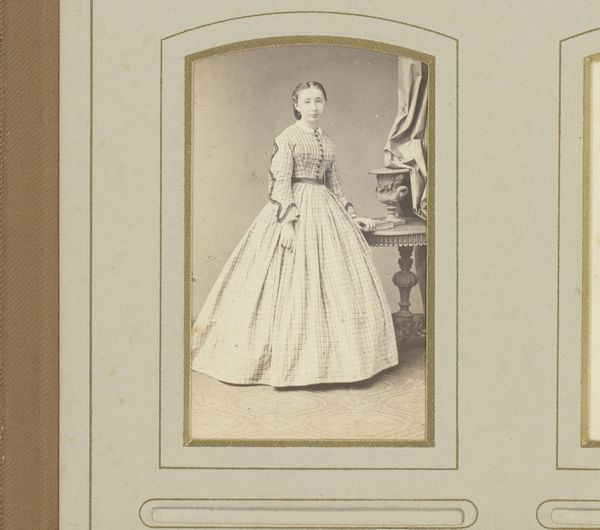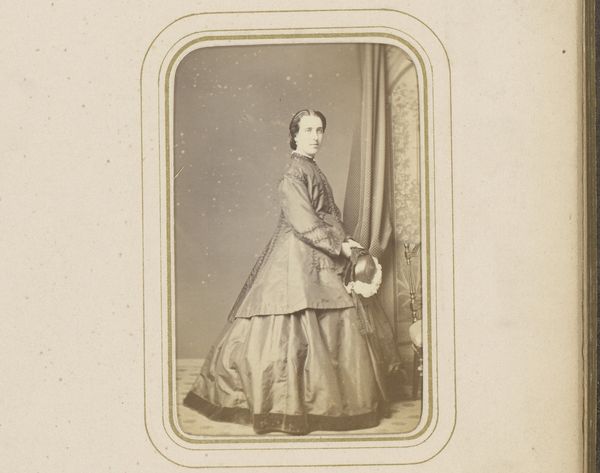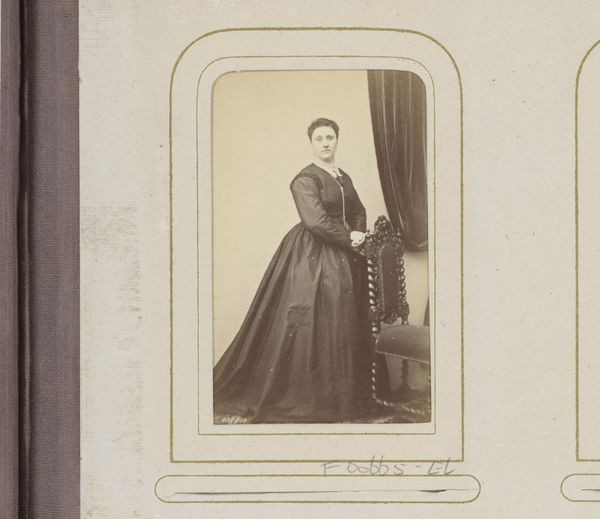
photography, gelatin-silver-print
#
portrait
#
photography
#
historical photography
#
gelatin-silver-print
#
19th century
#
academic-art
Dimensions: height 104 mm, width 64 mm
Copyright: Rijks Museum: Open Domain
Curator: What strikes me immediately is the materiality of this gelatin-silver print and the textures rendered in tones of sepia. Editor: Yes, and in terms of historical context, the portrait, attributed to H. Bibo, probably dating from 1855 to 1890, speaks to the rise of photography as a middle-class status symbol. Curator: It is fascinating how photography offered a relatively accessible means of image production and self-representation. The process of making this print would involve skilled darkroom practices, control over the chemicals, timing and layering of the materials to achieve these shades of gray. Editor: Absolutely, it’s no longer just the aristocracy having their likeness immortalized. It reflects the democratizing influence of technology on visual culture and speaks to the aspirations of this woman, how she chose to present herself to the world and perhaps more importantly, to posterity. Her very plain garment, but very large book, suggest something about what she values. Curator: You draw attention to a very fine detail. But, also consider the performative labor required for her to sit still for an extended period. The equipment limitations meant very long exposure times in comparison to our times, therefore, it took much more collaboration to get an acceptable photograph made in comparison to modern times. Editor: True, and the book in her hand signifies intellect, suggesting literacy and learnedness that are also performed through attire and posture in the social context. A subtle gesture of defiance given how 19th-century society narrowly defined roles for women in the family and wider political spectrum. Curator: The dark tone of the dress contrasting the lightness of the book certainly draws the eye and speaks volumes. This woman makes strategic choices that reflect self-agency to present herself. Her access to, and perhaps her embrace of learning is right there. Editor: Yes, and while portraiture may be timeless, it provides clues to larger questions and social shifts concerning individual agency in times when conventions could often seem unbreakable. Curator: Thinking about the material transformation from a raw photographic plate into a durable printed object enables us to appreciate better both artistic ingenuity, labor conditions as well as technological history. Editor: Indeed, by analyzing images like this portrait we can consider how the advent of photography shaped perception, memorialization, and ultimately, our understanding of history itself.
Comments
No comments
Be the first to comment and join the conversation on the ultimate creative platform.
